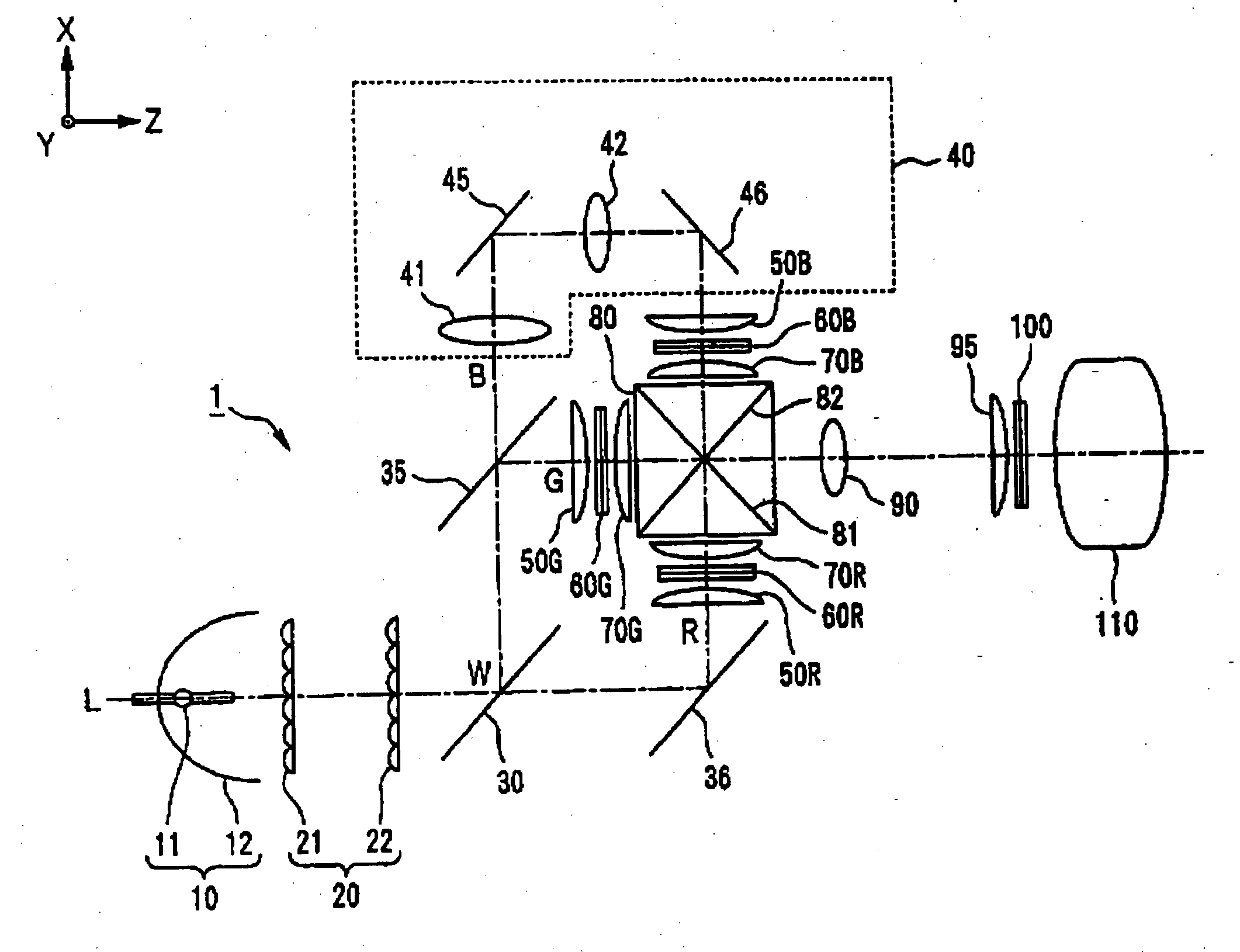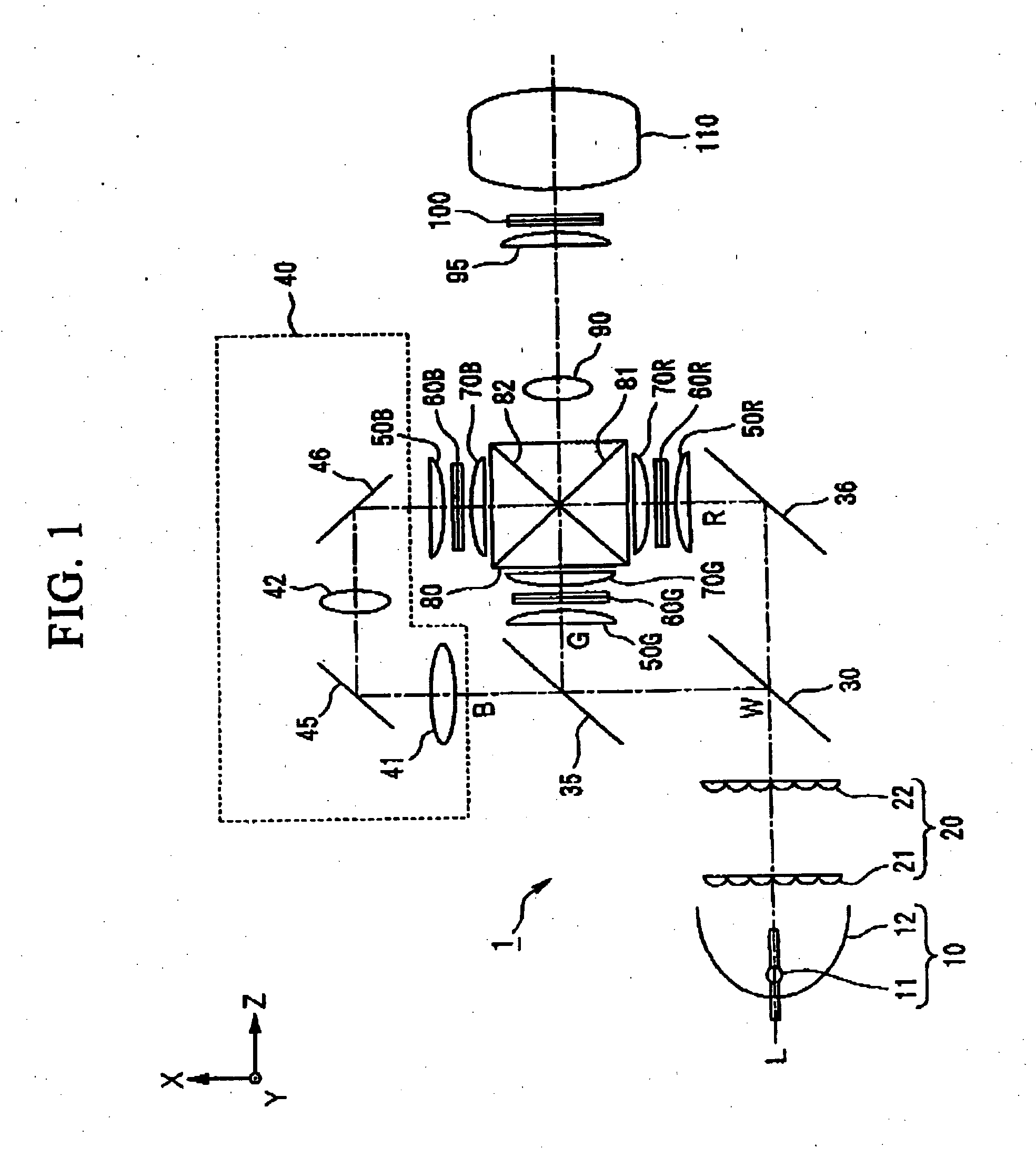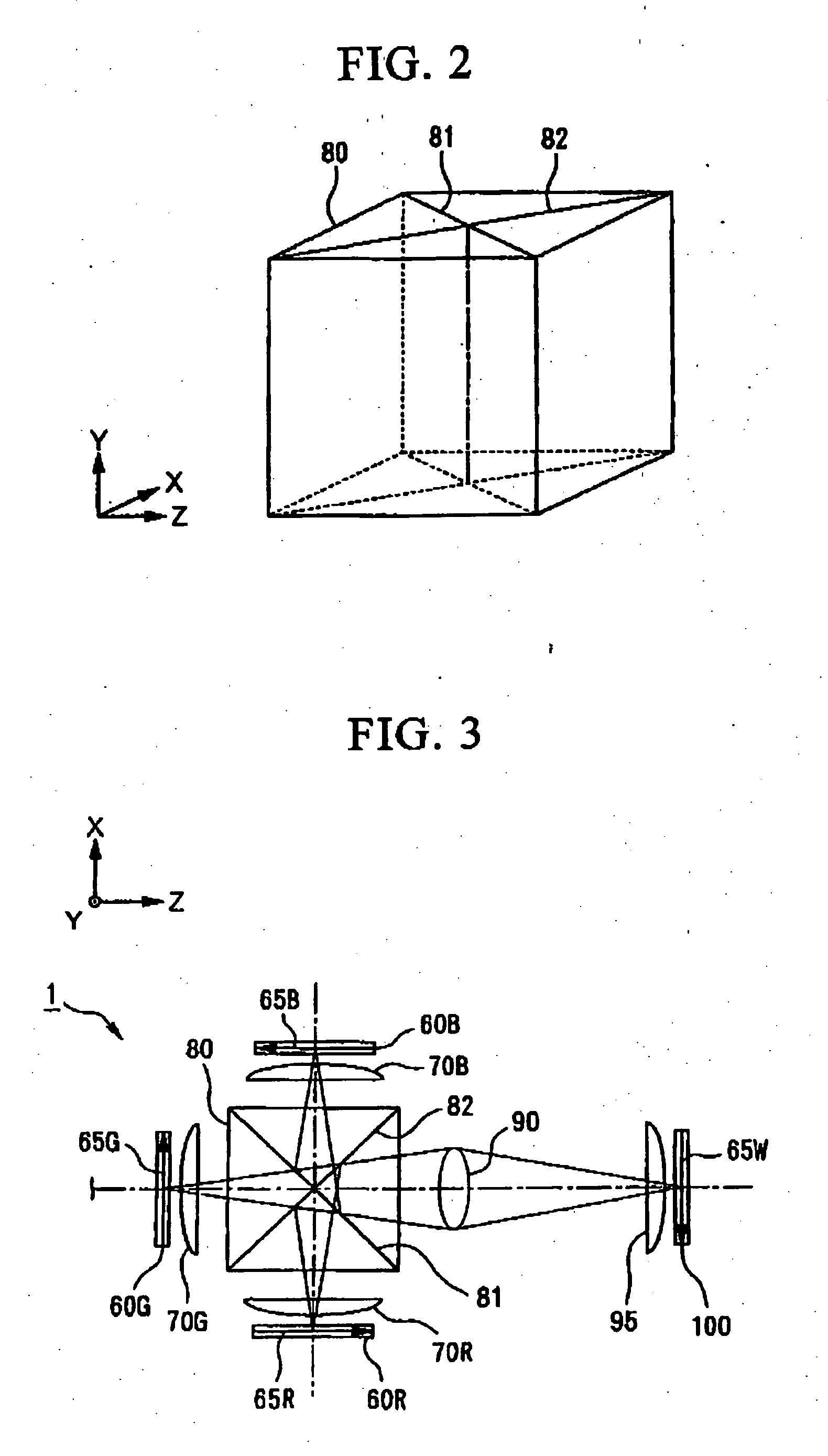Optical display device and projection-type display device
a display device and optical display technology, applied in the direction of instruments, television systems, color signal processing circuits, etc., can solve the problems of inability to accurately transit illumination light having a desired light intensity, inability to avoid the increase in the size of the fist optical modulation element, and inability to adequately demonize the expressive capabilities of cg images. to achieve the effect of high accuracy
- Summary
- Abstract
- Description
- Claims
- Application Information
AI Technical Summary
Benefits of technology
Problems solved by technology
Method used
Image
Examples
first embodiment
[0100]FIGS. 1 through 16 are drawings showing a first embodiment of an optical display device and projection-type display device of the present invention.
[0101] First, an explanation of the constitution of a projection-type display device 1 of a first embodiment of the present invention is provided based on FIGS. 1 through 3. FIG. 1 is a drawing showing the main optical configuration of projection-type display device 1 of the present invention, FIG. 2 is a drawing showing the constitution of a dichroic prism 80, and FIG. 3 is a drawing showing an example of a relay optical system that transmits an optical image at 1:1 magnification.
[0102] As shown in FIG. 1, projection-type display device 1 includes a light source 10, an optical integrator 20, dichroic mirrors 30 and 35, a reflecting mirror 36, a relay optical system 40, parallelizing lenses 50B, 50G and 50R, liquid crystal light valves 60B, 60G and 60R, incident side lenses 70B, 70G and 70R, a light-synthesizing cross dichroic pr...
second embodiment
Variation of Second Embodiment
[0213] The light-dividing cross dichroic prism and light-synthesizing cross dichroic prism of projection-type display device 130 explained in the second embodiment may also be integrated as in projection-type display device 140 of which the primary optical configuration is shown in FIG. 18. The two dichroic films contained in light-dividing cross dichroic prism 300 and light-synthesizing cross dichroic prism 80 of projection-type display device 130 have the same positional relationship when viewed along the direction of the Y axis. In other words, the blue light reflecting dichroic film in light-dividing cross dichroic prism 300 and the blue light reflecting dichroic film of light-synthesizing cross dichroic prism 80 lie roughly in the same plane, and this applies similarly for the red light reflecting dichroic films. Thus, light-dividing cross dichroic prism 300 and light-synthesizing cross dichroic prism 80 can be integrated in projection-type display...
third embodiment
[0221] The contents of the present invention can also be applied to a so-called direct-view liquid crystal display device (optical display device) in which the final optical image (display screen) formed on the second optical modulation element is viewed directly without enlarging. Namely, as shown in FIG. 22, a liquid crystal display device (optical display device) 160 can be composed by excluding the projection lens 110 in each of the projection-type display devices explained in the aforementioned first and second embodiments. In this type of constitution, since the luminance modulation light valve serves as the image display screen in liquid crystal display device 166, a constitution in which its dimensions are larger and its resolution is higher than the color modulation light valves is preferable.
[0222] In liquid crystal display device 160, although it is necessary to increase the size of emergent side lens 95 to match the in increase size of the color modulation light valves,...
PUM
 Login to View More
Login to View More Abstract
Description
Claims
Application Information
 Login to View More
Login to View More - R&D
- Intellectual Property
- Life Sciences
- Materials
- Tech Scout
- Unparalleled Data Quality
- Higher Quality Content
- 60% Fewer Hallucinations
Browse by: Latest US Patents, China's latest patents, Technical Efficacy Thesaurus, Application Domain, Technology Topic, Popular Technical Reports.
© 2025 PatSnap. All rights reserved.Legal|Privacy policy|Modern Slavery Act Transparency Statement|Sitemap|About US| Contact US: help@patsnap.com



